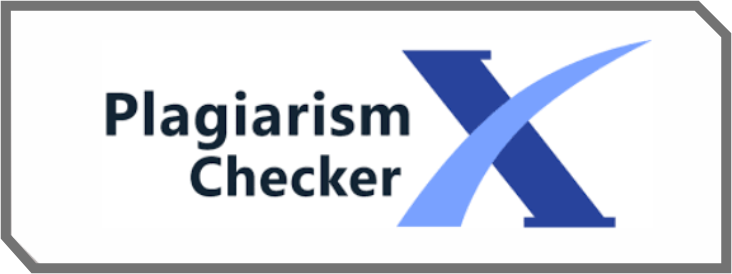Upaya Pencegahan Hasil Positif Palsu melalui Edukasi Pemeriksaan Narkotika pada Siswa Sekolah Mengenah Kejuruan
DOI:
https://doi.org/10.58169/jpmsaintek.v3i2.501Keywords:
drugs tests, false positive, vocational high schoolAbstract
Vocational High School (SMK) is a place of education that prepares its students to be ready to face the world of work. Drug tests are often carried out targeting prospective employees as a requirement to enter the workplace in an agency. Knowing about drug tests is very important for Vocational High School (SMK) students who will enter the world of work. Education about false positive results in drug tests is very important for SMK students who will enter the world of work. The right education program can increase efforts to prevent false positives in drug tests when entering the world of work for SMK graduates. To increase knowledge related to drug tests and false positive detection, health education is carried out and also a demonstration of drug tests on urine. Before and after education, each student takes a pre-test and post-test through a questionnaire to see the increase in their knowledge. After community service was carried out, with education about drug tests, there was an increase in understanding about drug tests, the drug test process with immunochromatography (ICT) and the detection of false positive results in drug tests.
References
Amanda, M. P., Humaedi, S., & Santoso, M. B. (2017). Penyalahgunaan narkoba di kalangan remaja (Adolescent substance abuse). Jurnal Penelitian & PKM, 4(2), 129–389.
Bicker, J., Alves, G., Falcão, A., & Fortuna, A. (2020). Timing in drug absorption and disposition: The past, present, and future of chronopharmacokinetics. British Journal of Pharmacology, 177(10), 2215–2239. https://doi.org/10.1111/bph.15017
Bintari, N. W. D., Prihatiningsih, D., Setya Purwanti, I., Luh Putu Devhy, N., & Widana, A. A. G. O. (2023). Optimalisasi peran usaha kesehatan sekolah dalam mewujudkan siswa bebas napza di SMK Kesehatan PGRI Denpasar. JAI: Jurnal Abdimas ITEKES Bali, 2(2), 127–134. https://ejournal.itekes-bali.ac.id/jai
Curtin, L. B., & Cawley, M. J. (2012). Immunoassay cross-reactivity of phenylephrine and methamphetamine. Pharmacotherapy, 32(5). https://caesar.sheridan.com/reprints/
Darmapatni, K. A. G., Basori, A., & Suaniti, N. M. (2016). Pengembangan metode GC-MS untuk penetapan kadar acetaminophen pada spesimen rambut manusia. Jurnal Biosains Pascasarjana, 18(3).
DePriest, A. Z., Knight, J. L., Doering, P. L., & Black, D. L. (2013). Pseudoephedrine and false-positive immunoassay urine drug tests for amphetamine. Pharmacotherapy, 33(5). https://doi.org/10.1002/phar.1216
Direktorat Diseminasi Informasi. (2017). Modul pendidikan anti narkoba bagi kalangan pekerja.
Elyyana, N., Putri Sukma Wibowo, S., Nurayuni, T., Rahmawati Utami, M., Nurfadhila, L., Farmasi, P., Ilmu Kesehatan, F., & Singaperbangsa Karawang, U. (n.d.). Literature review: Qualitative and quantitative identification methods of morphine in urine samples. Journal of Pharmaceutical and Sciences.
Inassa, I. (2019). Kegiatan tes urin sebagai upaya P4GN di instansi pemerintah oleh BNNP Jawa Timur (Studi kasus di Kantor Bea Cukai Surabaya). Medical Technology and Public Health Journal (MTPH Journal), 3(2), 148–163. www.bnnp.jatim.com
Kholik, S., Mariana, E. R., & Zainab. (2014). Faktor-faktor yang mempengaruhi penyalahgunaan narkoba pada klien rehabilitasi narkoba di Poli Napza RSJ Sambang Litium. Jurnal Skala Kesehatan, 5(1). www.kalsel.polri.go.id
Kumalasari, K., Rahmah, L., & Hastuti, Y. D. (2022). Edukasi bahaya narkoba pada remaja. Jurnal Inovasi, Pemberdayaan dan Pengabdian Masyarakat, 2(1), 18–22. https://doi.org/10.36990/jippm.v2i1.484
Kurniawan, L. B., Widaningsih, Y., Sennang, Nu., Bahrun, U., & Arif, M. (2015). Hasil positif palsu tes morfin pada skrining urin narkoba diduga akibat rifampisin. CDK-224, 42(1), 48–50. http://www.intechopen.com/books/toxicity-and-drug-testing/urine-drug-testing-in-pain-patients
Menteri Tenaga Kerja dan Transmigrasi Republik Indonesia. (2005). Permen No: PER.11/MEN/VI/2005 tentang pencegahan dan penanggulangan penyalahgunaan dan peredaran gelap narkotika, psikotropika dan zat adiktif lainnya di tempat kerja.
Prihatiningsih, D., Devhy, N. L. P., Purwanti, I. S., Bintari, N. W. D., & Widana, A. A. G. O. (2022). Upaya penyelamatan generasi muda melalui penyuluhan bahaya penyalahgunaan narkoba dan pemeriksaan laboratorium. Jurnal Pengabdian Kesehatan ITEKES Cendikia Utama Kudus, 5(3). http://jpk.jurnal.stikescendekiautamakudus.ac.id
Riahi-Zanjani, B. (2014). False positive and false negative results in urine drug screening tests: Tampering methods and specimen integrity tests. Pharmacology Online Silae, 1, 102–108. http://pharmacologyonline.silae.it
Shier, J., & Diaz, J. E. (2000). Avoid unfavorable consequences: Dextromethorphan can bring about a false-positive phencyclidine urine drug screen. The Journal of Emergency Medicine, 18(3), 379–381.
Woelfel, J. A. (2005). Drug abuse urine tests: False-positive results. Pharmacist’s Letter & Prescribe’s Letter, 21(3). www.pharmacistsletter.com
Downloads
Published
Issue
Section
License
Copyright (c) 2024 Mamay Mamay, Lia Mar’atiningsih, Muhammad Hadi Sulhan, Astari Nurisani, Gina Nafsa Mutmaina, Meti Rizki Utari

This work is licensed under a Creative Commons Attribution-ShareAlike 4.0 International License.










